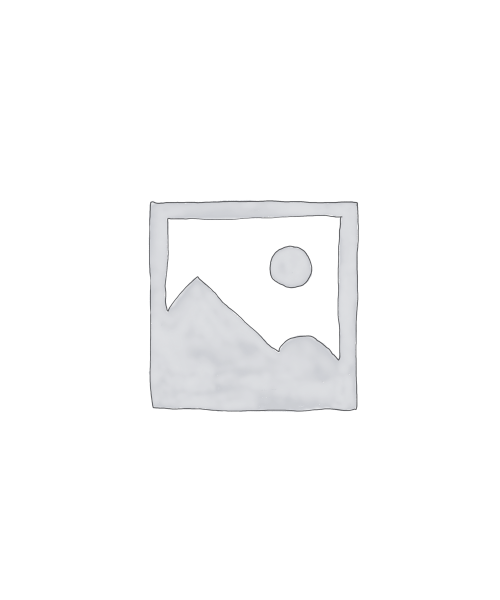- Đối với sản phẩm có giá: Sau khi chúng tôi ghi nhận thông tin đã thanh toán sản phẩm của bạn, sản phẩm sẽ được mở khóa và bạn có thể xem trực tiếp và tải tài liệu sản phẩm.
- Đối với thành viên trả phí: Bạn có thể mua và thanh toán sản phẩm với giá 0đ để tải tài liệu sản phẩm.
- Bạn có thể liên hệ với chúng tôi để được hỗ trợ mở khóa sản phẩm sớm nhất.
LIVING DUNES
- Chúng tôi chấp nhận các phương thức thanh toán sau đây: Thẻ tín dụng, thẻ ghi nợ, PayPal, chuyển khoản ngân hàng và tiền mặt.
Chúng tôi sẽ không thu thêm phí cho bất kỳ hình thức thanh toán nào.
- Nếu bạn gặp vấn đề về sản phẩm của chúng tôi trong thời gian sử dụng, vui lòng liên hệ với chúng tôi để được hỗ trợ xử lý sớm nhất nhé.
Xem trước mẫu
Living Dunes
When you think of a sand dune, you probably picture a barren pile of lifeless sand. But sand dunes are actually dynamic natural structures. They grow, shift and travel. They crawl with living things. Some sand dunes even sing.
A. Although no more than a pile of wind-blown sand, dunes can roll over trees and buildings, march relentlessly across highways, devour vehicles on its path, and threaten crops and factories in Africa, the Middle East, and China. In some places, killer dunes even roll in and swallow up towns. Entire villages have disappeared under the sand. In a few instances the government built new villages for those displaced only to find that new villages themselves were buried several years later. Preventing sand dunes from overwhelming cities and agricultural areas has become a priority for the United Nations Environment Program.
B. Some of the most significant experimental measurements on sand movement were performed by Ralph Bagnold, a British engineer who worked in Egypt prior to World War II. Bagnold investigated the physics of particles moving through the atmosphere and deposited by wind. He recognised two basic dune types, the crescentic dune, which he called “barchan,” and the linear dune, which he called longitudinal or “sief ’ (Arabic for “sword”). The crescentic barchan dune is the most common type of sand dune. As its name suggests, this dune is shaped like a crescent moon with points at each end, and it is usually wider than it is long. Some types of barchan dunes move faster over desert surfaces than any other type of dune. The linear dune is straighter than the crescentic dune with ridges as its prominent feature. Unlike crescentic dunes, linear dunes are longer than they are wide—in fact, some are more than 100 miles (about 160 kilometers) long. Dunes can also be comprised of smaller dunes of different types, called complex dunes.
C. Despite the complicated dynamics of dune formation, Bagnold noted that a sand dune generally needs the following three things to form: a large amount of loose sand in an area with little vegetation—usually on the coast or in a dried-up river, lake or sea bed; a wind or breeze to move the grains of sand; and an obstacle, which could be as small as a rock or as big as a tree, that causes the sand to lose momentum and settle. Where these three variables merge, a sand dune forms.
D. As the wind picks up the sand, the sand travels, but generally only about an inch or two above the ground, until an obstacle causes it to stop. The heaviest grains settle against the obstacle, and a small ridge or bump forms. The lighter grains deposit themselves on the other side of the obstacle. Wind continues to move sand up to the top of the pile until the pile is so steep that it collapses under its own weight. The collapsing sand comes to rest when it reaches just the right steepness to keep the dune stable. The repeating cycle of sand inching up the windward side to the dune crest, then slipping down the dune’s slip face allows the dune to inch forward, migrating in the direction the wind blows.
E. Depending on the speed and direction of the wind and the weight of the local sand, dunes will develop into different shapes and sizes. Stronger winds tend to make taller dunes; gentler winds tend to spread them out. If the direction of the wind generally is the same over the years, dunes gradually shift in that direction. But a dune is “a curi-ously dynamic creature”, wrote Farouk El-Baz in National Geographic. Once formed, a dune can grow, change shape, move with the wind and even breed new dunes. Some of these offspring may be carried on the back of the mother dune. Others are bom and race downwind, outpacing their parents.
F. Sand dunes even can be heard ‘singing’ in more than 30 locations worldwide, and in each place the sounds have their own characteristic frequency, or note. When the thirteenth century explorer Marco Polo encountered the weird and wonderful noises made
...
Những cồn cát sống động
Khi nghĩ đến một cồn cát, bạn có thể hình dung ra một đống cát cằn cỗi vô hồn. Nhưng thực ra cồn cát là dạng cấu trúc tự nhiên đầy linh hoạt. Chúng hình thành, thay đổi và chu du khắp nơi. Chúng bò trên mặt đất cùng với các sinh vật sống. Một số cồn cát thậm chí còn biết hát.
A. Dù chỉ đơn giản là một đống cát do gió thổi tạo thành, nhưng những cồn cát có thể cuốn qua cây cối và các tòa nhà, dồn dập tràn qua các đường cao tốc, nuốt chửng các phương tiện trên đường đi của chúng, đe dọa mùa màng và các nhà máy ở châu Phi, Trung Đông và Trung Quốc. Ở một số nơi, những cồn cát sát thủ thậm chí còn cuốn vào và nuốt chửng các thị trấn. Toàn bộ những ngôi làng đã biến mất dưới cát. Đã có một số trường hợp, chính phủ xây dựng những ngôi làng mới cho những người bị di dời để rồi phải chứng kiến chính những ngôi làng mới lại bị chôn vùi vài năm sau đó. Ngăn chặn các cồn cát càn quét qua thành phố và vùng nông nghiệp đã trở thành một ưu tiên của Chương trình Môi trường Liên hợp quốc.
B. Một số đo đạc thực nghiệm nổi bật nhất về chuyển động của cát được thực hiện bởi Ralph Bagnold, một kỹ sư người Anh làm việc tại Ai Cập trước Thế chiến thứ hai. Bagnold nghiên cứu tính chất vật lý của các hạt di chuyển trong khí quyển và được lắng lại bởi gió. Ông nhận thấy có hai loại cồn cát cơ bản, cồn cát lưỡi liềm mà ông gọi là “barchan” và cồn cát thẳng, được ông gọi là dạng chiều dọc hoặc “sief” (tiếng Ả Rập có nghĩa là “thanh kiếm”). Cồn cát barchan hình lưỡi liềm là loại phổ biến nhất. Đúng như tên gọi của nó, cồn cát này có hình dạng giống như một vầng trăng khuyết với các điểm ở mỗi đầu, và nó thường có chiều rộng lớn hơn chiều dài. Một số loại cồn cát barchan di chuyển trên bề mặt sa mạc nhanh hơn bất kỳ loại cồn cát nào khác. Cồn cát thẳng thẳng hơn cồn cát lưỡi liềm với đặc điểm nổi bật của chúng là các đường gợn sóng. Khác với cồn cát lưỡi liềm, cồn cát thẳng có chiều dài lớn hơn chiều rộng, một số có thể dài lên đến hơn 100 dặm (khoảng 160 km). Cồn cát cũng có thể bao gồm nhiều cồn nhỏ hơn thuộc các loại khác nhau, được gọi là cồn cát phức hợp.
C. Bất chấp tính đa dạng phức tạp của việc hình thành cồn cát, Bagnold lưu ý rằng nhìn chung một cồn cát cần ba điều kiện sau đây để có thể hình thành: một lượng lớn cát rời ở khu vực có ít thảm thực vật — thường là ở bờ biển hay sông, hồ khô cạn hoặc đáy biển; một cơn gió hoặc làn gió thoảng để làm di chuyển các hạt cát; và một chướng ngại vật, có thể chỉ nhỏ như một tảng đá hoặc lớn như một cái cây, làm cho cát mất đà di chuyển và bị lắng xuống. Khi ba yếu tố biến thiên này kết hợp với nhau, một cồn cát được hình thành.
D. Khi gió bốc cát lên, cát chuyển động nhưng thường chỉ cách mặt đất khoảng một hoặc hai inch, cho đến khi có chướng ngại vật dừng nó lại. Các hạt nặng nhất bám vào vật cản này và hình thành một đường gờ lượn sóng nhỏ hoặc vết lồi. Các hạt nhẹ hơn sẽ tự lắng xuống ở phía bên kia của vật cản. Gió tiếp tục mang các hạt lên đỉnh đống cát cho đến khi đống cát bị dốc nhiều đến mức đổ sập xuống dưới sức nặng của chính nó. Cát sụp xuống sẽ dừng lại khi đạt đến độ dốc vừa phải để giữ cho cồn cát ổn định. Cát lặp lại chu kỳ nhích dần theo hướng gió như vậy đến đỉnh cồn, sau đó trượt xuống phía bề mặt dốc của cồn cát khiến cả cồn cát nhích dần về phía trước, di chuyển theo hướng gió thổi.
E. Tùy thuộc vào tốc độ và hướng gió cũng như trọng lượng của cát ở khu vực đó, các cồn cát sẽ phát triển theo các hình dạng và kích thước khác nhau. Gió mạnh có xu hướng làm cho các cồn cát cao hơn; gió nhẹ có xu hướng làm chúng lan tỏa rộng. Nếu hướng gió về cơ bản là giống nhau qua mỗi năm, các cồn cát dịch chuyển dần dần theo hướng đó. Nhưng cồn cát là “một sinh vật năng động tò-mò”, Farouk El-Baz viết trên tạp chí National Geographic. Sau khi được hình thành, một cồn cát có thể lớn lên, thay đổi hình dạng, di chuyển theo gió và thậm chí sinh ra các cồn cát mới. Một vài cồn con trong số này có thể được mang trên lưng của chính cồn cát mẹ. Số khác được sinh ra và chạy
...Để xem được đầy đủ nội dung và tải dữ liệu, bạn phải trở thành thành viên của chúng tôi và trả phí cho tài liệu (nếu có)











